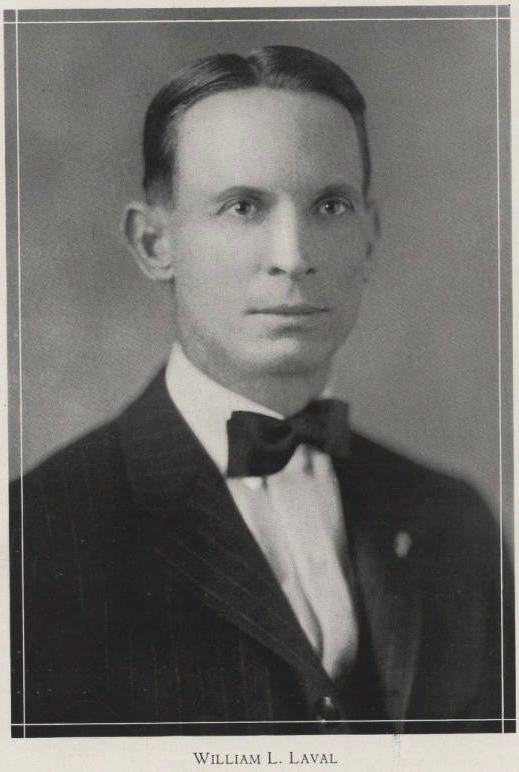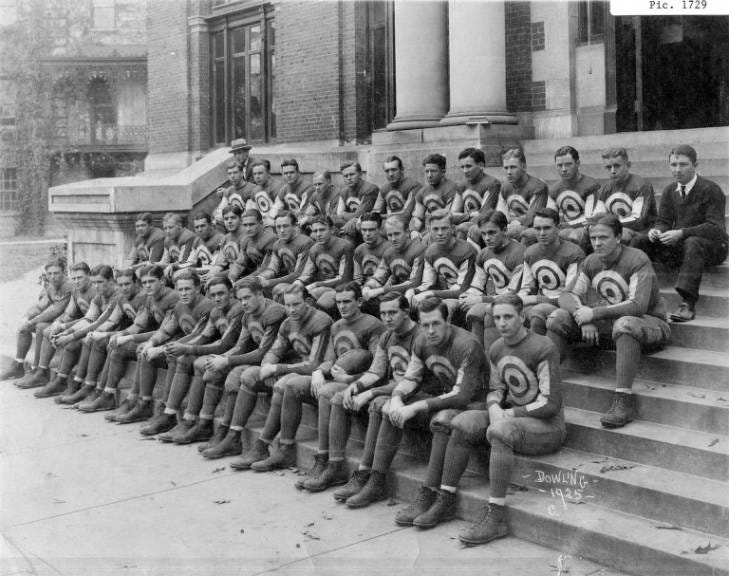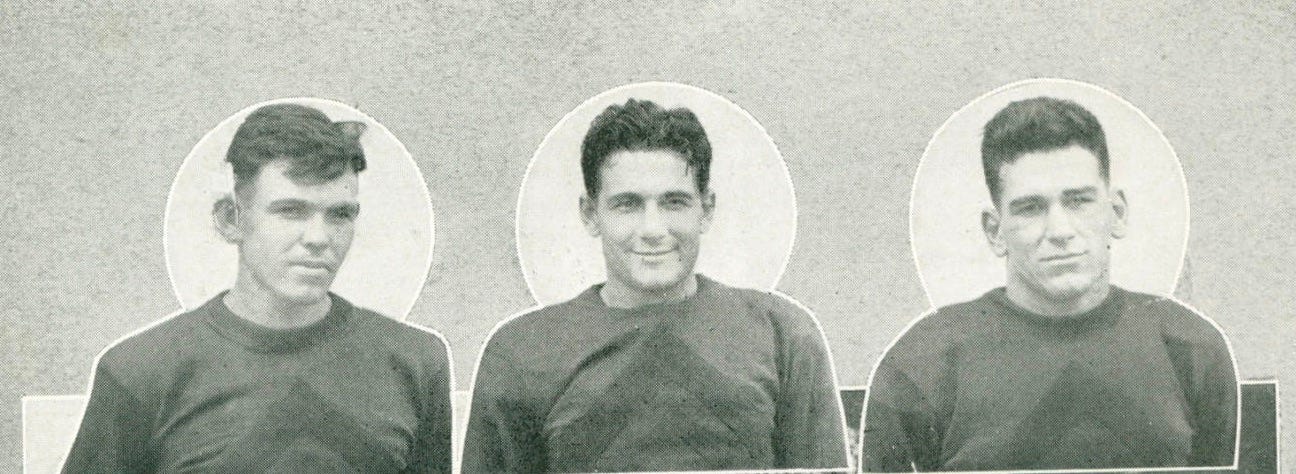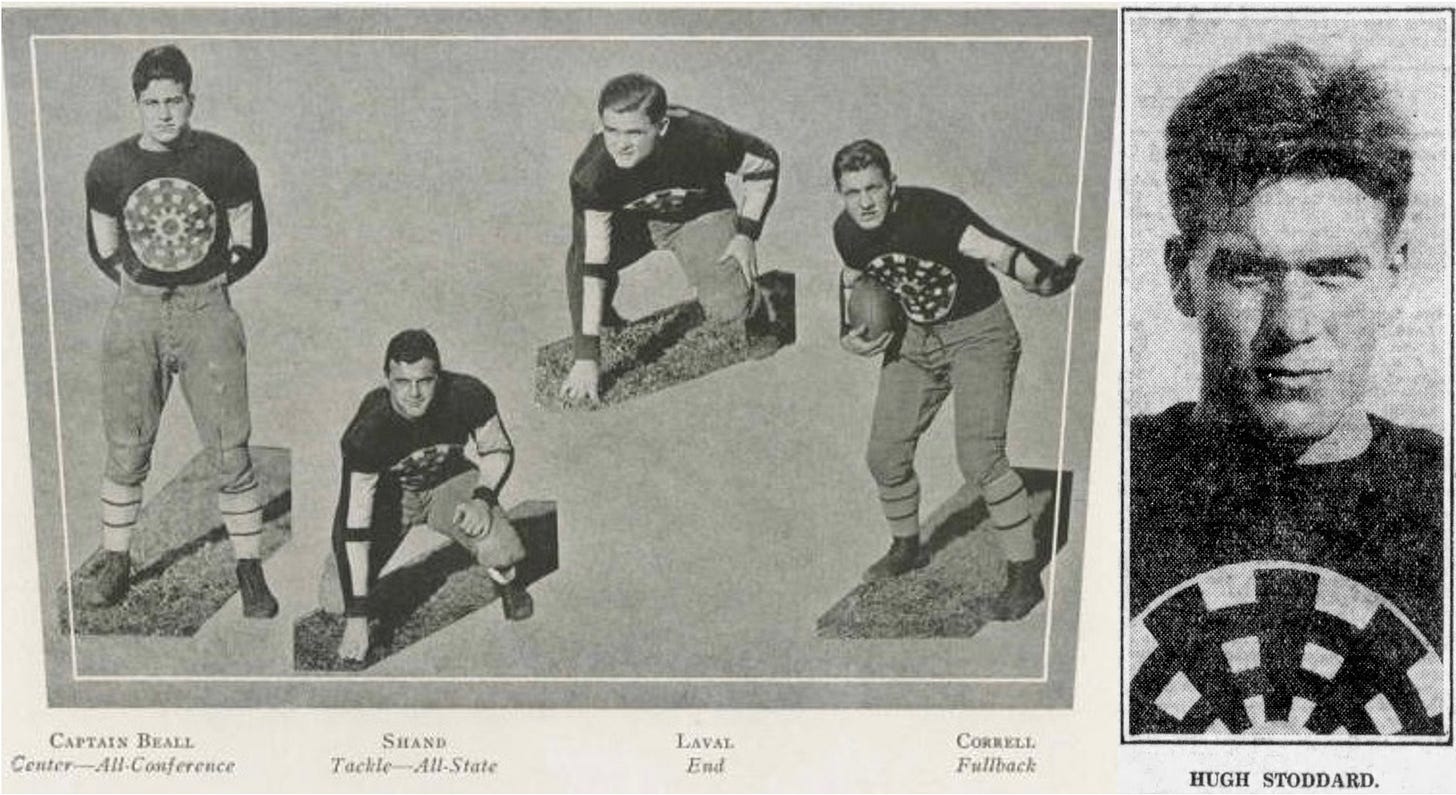Today's Tidbit... Football's Oddest Jersey Designs
Billy Laval may have been the Mike Leach of his day. He took a different approach to the game and succeeded but was not your usual sort of fellow. Laval became Furman's football head coach in 1915 after playing minor league baseball for some years while assisting Furman in football near the end of those years.
He did well at Furman, going 80-35-4 while playing in the SIAA, which included the core of what became the SEC and ACC. Back then, the SIAA was more an eligibility forum than a scheduling platform, so many teams only played other SIAA teams in their home and border states. As a result, people focused on informal state championships more than SIAA championships. After Billy Laval won a few state championships at little old Furman, the University of South Carolina folks hired him to take over their program in 1928. He went 39-26-7 there through the 1934 season before spending another 13 seasons at Emory & Henry and Newberry.
Descriptions of Laval suggest he was either a bit odd or just liked stirring his own drink, but either way, he stood out from the crowd by designing the strangest football jersey of all time and had another one in the Top 5.
For context, in the 1920s, few teams wore numbers on the front of their jerseys, though most wore them on the back. In a trend that started in the 1910s, teams placed friction strips or ovals on their chest and inner sleeves to help prevent fumbling. Initially used for function, the strip designs became focused on fashion, with some schools integrating their school letter, emblem, or mascot into the designs. The linked article includes a picture of a Billy Laval jersey that Furman's 1925 team wore, as seen below.
I haven't come across a rationale for putting targets on the jerseys other than a columnist suggesting it helped passers place the ball. But Furman's interior linemen wore the targets, so I'm guessing style outweighed function.
As strange as the Furman target jerseys seem now, Laval extended his palette after moving to South Carolina. His 1928 season wore red diamonds on their chests.
The 1928 uniforms were mild compared to those of 1929, when Billy supposedly worked with a Greenwich Village artist to create a "cubist" design. It retained the circular pattern of Furman’s target jerseys but formed a cascade of black, blue, and orange stripes resembling a dartboard. (I haven't found a color image, but contemporary newspaper reports describe the colors.)
Some articles suggest Billy thought the design might confuse or hypnotize opponents, while others make it seem Billy was pulling everyone's legs, telling them not to make too big a fuss about football. Still, he sent his boys on this field looking like that, whatever the rationale. At home and on the road, they had a look unlike any seen before or after them.
Perhaps some folks took offense to the jerseys because they were gone by 1930, when South Carolina wore jerseys with numbers on the front, so the dartboard jerseys got relegated to the Gamecocks' Biddy or freshmen team.
I don't recall seeing teams wearing dartboard or similar jerseys after Billy's South Carolina team, but an odd jersey that preceded theirs took the field across the continent at Stanford in 1921. Stanford played the 1921 season under a one-and-done coach, Eugene Van Gent, who had success at previous stops. It is unclear who designed or authorized Stanford's 1921 jersey, but they appeared only that year and never again.
After the 1921 season, Stanford hired Pop Warner away from Pitt. However, since Pitt held Warner to the two remaining years on his contract, he sent his assistant, Andy Kerr, to coach the Cardinal for two years until Warner's contract at Pitt ran out. Kerr was no slouch, as he showed later while coaching Colgate. Either way, Stanford's 1921 jerseys were gone in 1922, never to be seen again.
Surely someone living 100 years down the road will look at today’s jerseys, logos, or other uniform elements and wonder, “What were they thinking?” Will Oregon’s uniforms be viewed that way or is that the direction uniforms are headed? Which elements of today’s uniforms do you think people will find amusing 100 years hence?
Football Archaeology is reader-supported. Click here to buy one of my books or otherwise support the site.











Awesome images and story behind the jersey designs.
Great stuff